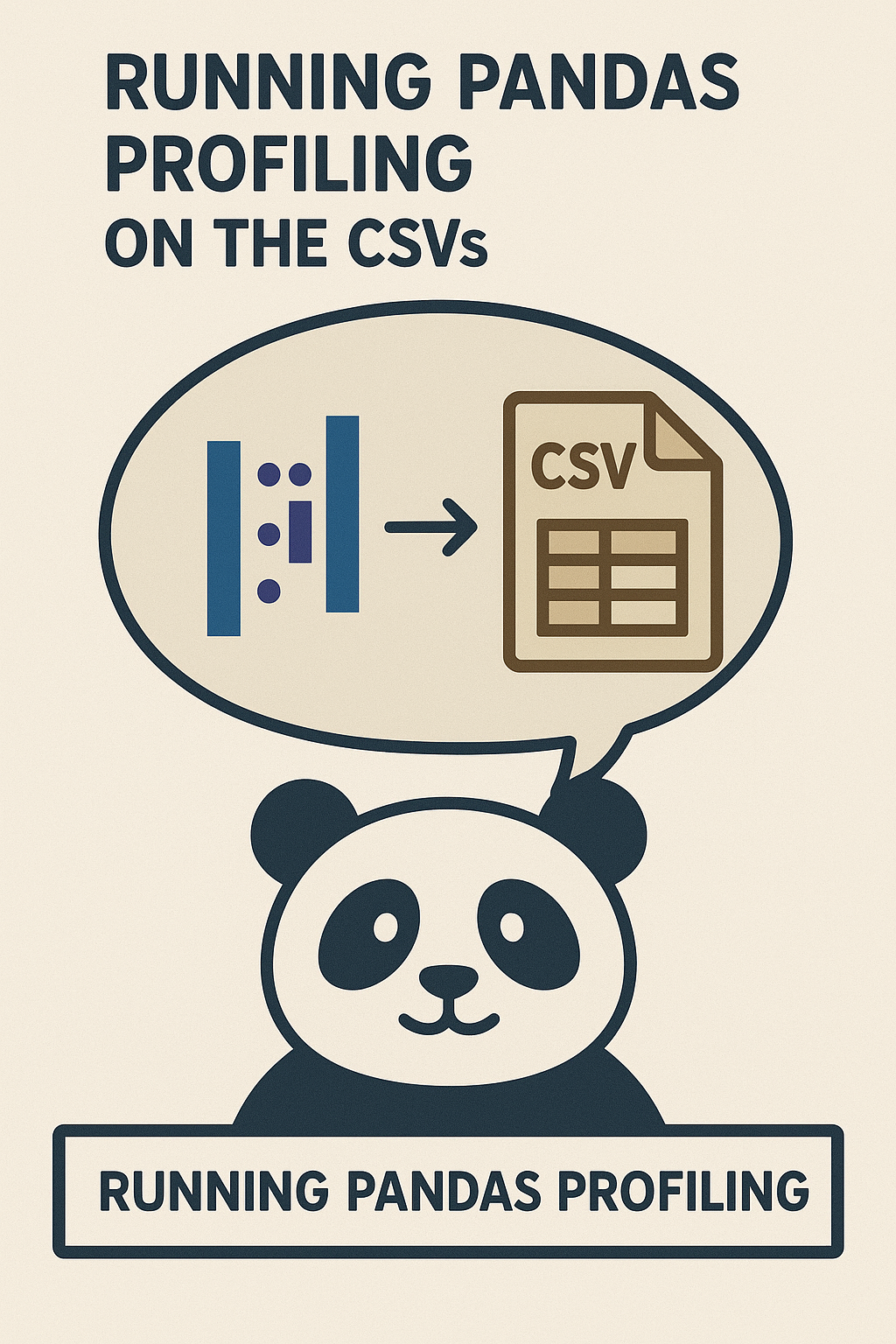Unlock Hidden Insights in Your Salesforce Data: The Game-Changing Power of YData Profiling
In the fast-paced world of sales and customer relationship management, data is your most valuable asset. But raw Salesforce CSV exports sitting in your downloads folder? That’s just potential waiting to be unleashed. Enter YData Profiling (formerly pandas-profiling), a revolutionary Python library that transforms mundane data exploration into an automated intelligence goldmine.
The Data Exploration Revolution You’ve Been Waiting For
Traditional data analysis requires hours of manual exploration—writing countless lines of code to understand distributions, identify missing values, detect correlations, and spot anomalies. YData Profiling eliminates this tedious groundwork by generating comprehensive, interactive HTML reports with a single line of code. For Salesforce data, this means instant visibility into your entire sales ecosystem.
Imagine uploading your quarterly sales export and immediately seeing:
- Complete statistical summaries of every field from opportunity amounts to lead sources
- Interactive visualizations showing revenue trends, conversion patterns, and seasonal fluctuations
- Correlation matrices revealing hidden relationships between sales activities and outcomes
- Data quality assessments highlighting missing information and potential data entry errors
- Duplicate detection across accounts, contacts, and opportunities
Why Salesforce Data Desperately Needs Automated Profiling
Salesforce environments are notorious for accumulating data inconsistencies over time. Sales teams work fast, data entry standards vary, and custom fields multiply. Without regular data health checks, your CRM becomes a breeding ground for:
Data Quality Issues:
- Inconsistent formatting across text fields (company names, addresses, phone numbers)
- Missing critical information in required fields
- Duplicate records creating inflated metrics
- Outliers that skew reporting and forecasting
Hidden Business Intelligence:
- Seasonal patterns in sales cycles that could optimize territory planning
- Correlation between specific activities and deal closure rates
- Lead source performance that could redirect marketing spend
- Sales rep behaviors that drive higher conversion rates
YData Profiling surfaces these insights automatically, turning what would be weeks of manual analysis into a 30-second report generation.
The Technical Magic Behind the Scenes
YData Profiling leverages advanced statistical analysis and machine learning techniques to provide deeper insights than traditional business intelligence tools. The library performs:
Statistical Analysis:
- Descriptive statistics for numerical fields (revenue, deal size, days in pipeline)
- Frequency analysis for categorical data (lead sources, industries, deal stages)
- Distribution analysis with automatic chart generation
- Outlier detection using multiple statistical methods
Relationship Discovery:
- Pearson correlation coefficients between numerical variables
- Cramér’s V for categorical associations
- Mutual information scores for non-linear relationships
- Dependency matrices showing field interconnections
Data Quality Assessment:
- Missing value patterns and percentages
- Duplicate row identification with configurable similarity thresholds
- Data type validation and consistency checks
- Format pattern recognition for standardization opportunities
Building Your Salesforce Analytics Powerhouse
Creating a Python notebook for Salesforce data profiling opens up possibilities that extend far beyond basic reporting. Here’s why this approach is transformative:
Reproducible Analysis Pipeline:
Your notebook becomes a living document that can process new Salesforce exports automatically. Schedule it to run monthly, and you’ll have consistent data health monitoring without manual intervention.
Custom Business Logic Integration:
Unlike generic BI tools, your Python notebook can incorporate your specific business rules—custom lead scoring algorithms, territory-specific analysis, or industry benchmarking that reflects your unique market position.
Advanced Visualization Capabilities:
Combine YData Profiling’s automated insights with libraries like Plotly or Seaborn to create executive-ready dashboards that tell your data’s story compellingly.
Machine Learning Foundation:
Your profiling notebook becomes the foundation for more advanced analytics—predictive lead scoring, churn analysis, or revenue forecasting models that leverage the data quality insights YData Profiling provides.
Real-World Impact: What Your Reports Will Reveal
The true power of YData Profiling emerges when applied to real Salesforce datasets. Teams consistently discover:
Revenue Optimization Opportunities:
Correlation analysis might reveal that opportunities with specific activity patterns (certain numbers of calls, emails, or meetings) have significantly higher close rates, enabling sales managers to coach more effectively.
Data-Driven Territory Management:
Geographic and temporal analysis of your sales data can uncover seasonal patterns or regional preferences that inform territory assignments and quota setting.
Marketing Attribution Clarity:
Lead source analysis combined with conversion tracking provides clear ROI metrics for marketing channels, enabling budget reallocation to highest-performing sources.
Process Improvement Insights:
Sales cycle analysis can identify bottlenecks in your pipeline, revealing which stages cause deals to stall and informing sales process optimization.
Getting Started: From CSV to Insights in Minutes
The beauty of YData Profiling lies in its simplicity. A basic implementation requires just a few lines of code:
import pandas as pd
from ydata_profiling import ProfileReport
# Load your Salesforce export
df = pd.read_csv('salesforce_export.csv')
# Generate comprehensive report
profile = ProfileReport(df, title='Salesforce Data Analysis')
profile.to_file('salesforce_insights.html')
But the real magic happens when you customize the analysis for your specific Salesforce schema and business requirements.
Advanced Configuration for Maximum Impact
YData Profiling offers extensive customization options that make it perfect for Salesforce data analysis:
Custom Data Types:
Configure the library to properly handle Salesforce-specific formats like datetime fields, picklist values, and formula fields.
Business Rule Integration:
Define custom validation rules that align with your data governance policies—ensuring phone number formats, email validation, and required field completion.
Correlation Analysis:
Fine-tune correlation algorithms to focus on business-relevant relationships while filtering out spurious correlations that don’t drive actionable insights.
Performance Optimization:
For large Salesforce exports (100K+ records), configure sampling strategies and memory management to ensure fast report generation without sacrificing insight quality.
The Competitive Advantage of Automated Data Intelligence
Organizations using YData Profiling for Salesforce analysis report significant competitive advantages:
Faster Decision Making:
What previously required data analysts weeks to uncover now surfaces in automated reports, enabling rapid response to market changes and performance trends.
Improved Data Governance:
Regular profiling reports make data quality issues visible to stakeholders, creating accountability and driving systematic improvements in data entry practices.
Enhanced Sales Performance:
By understanding the statistical patterns in successful deals, sales teams can replicate winning behaviors and avoid common pitfalls that lead to lost opportunities.
Strategic Planning Capabilities:
Historical trend analysis and seasonal pattern recognition enable more accurate forecasting and strategic resource allocation.
Building Your Analytics Foundation
The transition from reactive reporting to proactive data intelligence starts with automated profiling. Your Python notebook becomes the central hub for all Salesforce data analysis—a single source of truth that evolves with your business needs.
Consider integrating your profiling workflow with Apache Airflow for scheduled execution, Jupyter Lab for collaborative development, or Streamlit for creating interactive dashboards that stakeholders can explore independently.
The Future of Sales Analytics
YData Profiling represents a paradigm shift from manual data exploration to intelligent automation. As your Salesforce data grows and evolves, your profiling capabilities scale automatically—identifying new patterns, surfacing emerging trends, and maintaining data quality standards without increasing analytical overhead.
The investment in building a robust profiling notebook pays dividends immediately through improved data quality and accelerates over time as the insights drive better business decisions. Your sales team gains a competitive edge through data-driven strategies, your marketing team optimizes spend based on conversion analytics, and your leadership team makes strategic decisions backed by comprehensive data intelligence.
Transform your Salesforce CSV exports from static data dumps into dynamic intelligence assets. Your future self will thank you for making the investment in automated data profiling today.
Image Prompt Ideas for Infographics and Generative Art
Professional Infographic Concepts:
1. Data Transformation Visualization:
“Split-screen comparison showing chaotic CSV spreadsheet data on left transforming into beautiful, organized charts and graphs on right, with flowing data streams connecting them, modern blue and green color scheme, clean minimalist design”
2. Sales Funnel Intelligence:
“Isometric 3D sales funnel with data flowing through different stages, each stage illuminated with glowing analytics charts, KPI dashboards floating around the funnel, purple and gold gradient background”
3. Correlation Network Diagram:
“Abstract network visualization showing interconnected nodes representing different Salesforce data fields, with glowing connection lines of varying thickness showing correlation strength, dark background with neon blue and pink connections”
4. Data Quality Dashboard:
“Clean, modern dashboard interface showing data quality metrics as progress bars, pie charts, and status indicators, with subtle shadows and gradients, professional color palette of blues, grays, and accent green”
Creative Generative Art Ideas:
5. Data DNA Helix:
“Double helix structure made of flowing data points and numbers, spiraling upward with different colors representing different data types, against a cosmic background with data constellations, surreal digital art style”
6. Crystal Data Formations:
“Geometric crystal structures growing from base, each facet showing different data visualizations (bar charts, scatter plots, heatmaps), surrounded by floating holographic data particles, ethereal lighting effects”
7. Data Ocean Waves:
“Stylized ocean waves made entirely of flowing numbers, charts, and data visualizations, with sales metrics surfing on wave crests, vibrant sunset colors blending into digital pixel effects”
8. Cyberpunk Analytics City:
“Futuristic city skyline where each building is a different type of chart or graph, neon-lit data streams flowing between buildings like energy conduits, purple and cyan color scheme with holographic overlays”
9. Data Garden Ecosystem:
“Organic garden scene where plants and flowers are made of charts and graphs, data streams flowing like water through the scene, butterflies made of floating KPIs, natural green tones mixed with digital blue accents”
10. Mandala Data Visualization:
“Intricate mandala pattern created entirely from interconnected data visualization elements, each ring representing different analysis layers, symmetrical design with rainbow color gradients flowing from center outward”

